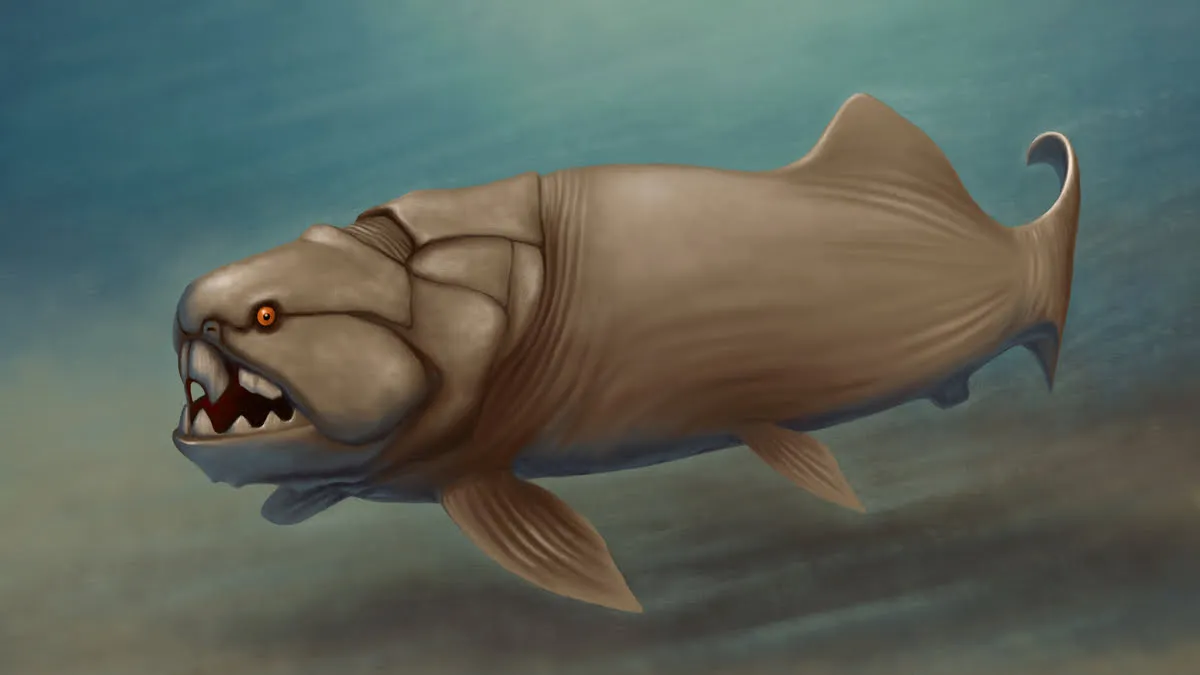The Devonian period was characterized by fish diversification and the emergence of tetrapods. All this ended abruptly as various factors contributed to a radical die-off of most marine life.
The consequences of this mass extinction were far-reaching, altering the evolutionary trajectory of vertebrate life and restructuring marine ecosystems. What could have triggered such a massive and targeted extinction?
About 375 million years ago, the Late Devonian Mass Extinction occurred. This event which wiped out nearly 75% of marine species, is believed to have been primarily caused by widespread oceanic anoxia, a severe depletion of oxygen in the oceans.
While that wraps it up neatly, there is an ongoing debate about what factors may have played a role. This article examines the current scientific understanding of the Late Devonian mass extinction, its causes, and its long-term implications for Earth’s biosphere. First, let’s take a look at life before the extinction.
The Path to Extinction
In our last article in this series that covered the End-Ordovician mass extinction, we briefly discussed both extinction and mass extinctions. Next, we discussed the Cambrian Explosion and the Great Ordovician Biodiversification Event, known as the “GOBE.”
We then discussed how climate change caused by plate tectonics induced an ice age followed by an abrupt thawing at the end of the Ordovician Period. This drove up to 85% of life on Earth to extinction.
Finally, we examined how life quickly rebounded, despite losing so many species in the first-ever mass extinction. Species found on Earth after the End-Ordovician event still resembled those found before the extinction; all major taxa of marine animals managed to endure.
The Silurian seas that followed were much like those of the Ordovician. Soon, a new group of creatures would emerge. Let’s check them out.
The First Jawed Fish Appear
Before the end of the Silurian Period, approximately 419 million years ago, all known fish were ‘jawless.’ This means, quite literally, that none of them had jaws as we understand them in modern fish. It’s indeed a strange concept to consider.
Many of these fish had bony, armored heads. It’s hypothesized that most of them would have remained near the bottom of the ocean, rooting around in sediments for food.
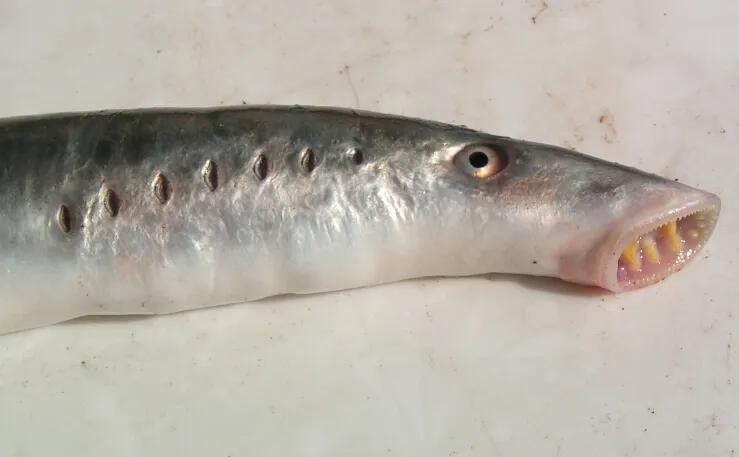
This evolutionary advantage likely contributed to the decline of jawless fish, as jawed fish, known as gnathostomes, became more dominant in marine ecosystems.
Amazingly, most ancient fish swam through prehistoric seas without jaws. Today, only two groups from this once-diverse lineage remain: lampreys and hagfish. These eel-like creatures, known as agnathans, meaning ‘jawless ones,’ offer us a glimpse into the ancient past of vertebrate life.
The evolution of jaws was a revolutionary moment in ocean history. These new jawed vertebrates, called gnathostomes, quickly became the dominant force in aquatic ecosystems.
Sharks were among the early success stories, first appearing about 419 million years ago. Around the same time, we see the rise of placoderms, literally ‘plate-skinned’ armored fish that looked like swimming tanks.
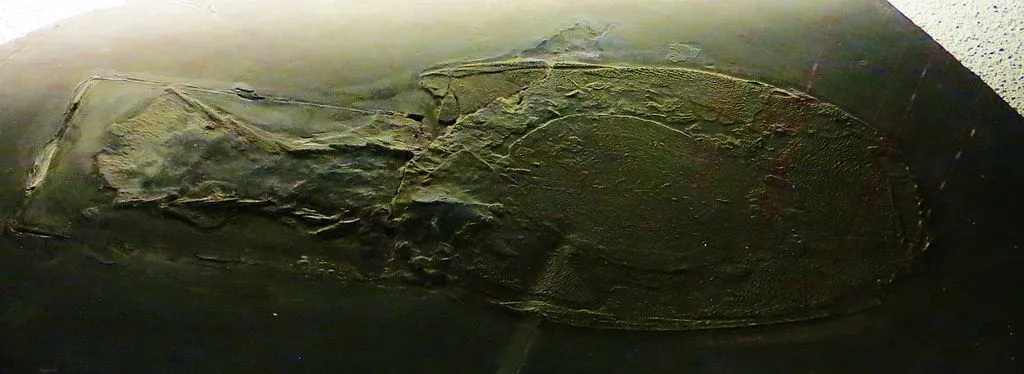
The Devonian Period, which spanned from 419 to 359 million years ago, saw an explosion of jawed fish diversity. Gnathostomes adapted to fill a wide range of ecological niches, setting the stage for the variety of fish we see today.
The adaptive radiation of these jawed vertebrates laid the foundation for modern marine ecosystems. These organisms diversified and spread so much that the Devonian Period is often called the “Age of Fishes.” Check out this image showcasing a few specimens below.

Why did jaws spread so rapidly once they appeared? Quite simply, jaws made it much easier to capture and eat food.
While jawless fish were mostly restricted to rooting around in sediments for food, jawed fish could use their new jaws to capture, crush, and slice prey into bite-sized pieces.
Jaws also allowed fish to develop teeth, which could be further specialized for eating specific types of prey.
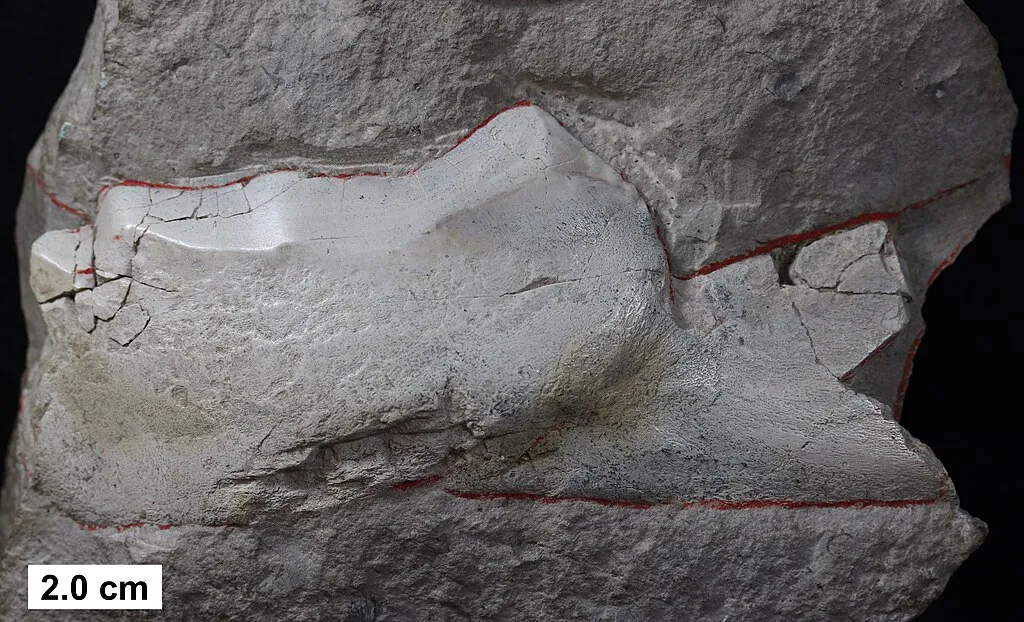
These evolutionary advantages enabled jawed fish to consume a wider variety of foods than their jawless cousins, including the jawless fish themselves.
The jawed fish enjoyed dominance over their ecosystems, driving an evolutionary arms race. Prey species developed new defensive adaptations, such as shells and camouflage, in response to these new predators, such as the fearsome Dunkleosteus. Life in the ocean was getting scary.
The Devonian Terror – Dunkleosteus
Among the most fascinating early jawed fish was the placoderm Dunkleosteus terelli. This armored predator, living about 380-360 million years ago, had a unique adaptation: its jaws formed large, sharp cutting edges perfect for slicing through the armor of other fish.
Scientists believe that Dunkleosteus could bite with a force rivaling that of Tyrannosaurus rex or the giant shark Megalodon. Imagine a fish with the bite of a dinosaur!
Science Daily has details about this 2006 study conducted by the Field Museum. Check it out when you’re done over here.

Dunkleosteus had thick, bony plates that protected its entire head, including its eyeballs. It grew several meters long, outmatching its competitors and becoming one of the largest animals of its time.
With its massive size and powerful jaws, Dunkleosteus dominated the Devonian seas from its emergence around 380 million years ago until its extinction at the end of the Devonian Period, 359 million years ago. What led to the downfall of this formidable predator?
Pulses of Extinction
The reign of Dunkleosteus and the other placoderms wouldn’t last. Just like the creatures of the Ordovician, they faced extinctions of their own.
The very success of these groups made them particularly vulnerable to environmental changes. As conditions in the oceans began to fluctuate, these specialized fish faced challenges that led to their decline.
This video from the Paleo Analysis channel details this specialization as a vulnerability. It’s a recap of what we’ve already discussed with some context.
This extinction was not believed to have occurred as quickly as some others. At least three pulses of extinction occurred in the late Devonian:
- End-Givetian/Taghanic Event (around 383 million years ago): This was the first significant extinction pulse of the late Devonian. It primarily affected marine life, including reef-building organisms and early jawed fish. The exact causes are less well understood, but changes in sea levels and environmental shifts are thought to be contributing factors.
- End-Frasnian/Kellwasser Event (around 372 million years ago): This extinction event was more severe and had a major impact on marine biodiversity. It led to the loss of many fish species, including several groups of jawed fish like placoderms. This event is associated with significant changes in climate, including cooling and reduced oxygen levels in the oceans, which contributed to the widespread extinction.
- End-Famennian/Hangenberg Event (around 359 million years ago): The most severe of the late Devonian extinctions. It marked a significant turning point. It caused major declines in marine biodiversity, including the extinction of many fish species and reef-building organisms. This event is often linked to global cooling and severe environmental changes that dramatically reshaped marine ecosystems.
Of these three pulses of extinction, only the end-Frasnian event, also known as the “Frasnian-Famennian,” “F-F,” or late Devonian mass extinction, destroyed enough species to be considered a mass extinction.
Competing Definitions of the Late Devonian Extinction Event
It is important to mention that not all scientists agree on how exactly to define the Late Devonian mass extinction. Most scholarly sources identify the mass extinction as the extinction that occurred at the Frasniam-Famennian boundary, a view upheld in this article.
Some other sources assert that the Late Devonian mass extinction should include all three extinction pulses discussed above, not just the End-Frasnian. What do you think?
Scant Evidence
Unfortunately, the Frasnian-Famennian is one of the most poorly understood of the five mass extinctions, as scientists have little evidence with which to understand it. There seems to be only one indisputable piece of evidence about the event.
Across the globe, in rocks dating to this time period, there’s a dramatic drop in the diversity of marine life. Particularly hard-hit were the reef-building organisms and many groups of fish.
The once-dominant placoderms, including the fearsome Dunkleosteus, disappeared entirely. Trilobites, which had thrived for millions of years, declined significantly.
We need to turn our focus to Europe. There we find anoxic seas.
Anoxic Seas
Throughout Europe, there is a unit of rock from the Devonian Period known as the “Kellwasser Black Shale.” The Frasnian-Famennian boundary happens to occur within this black shale.
Because black shales are only deposited by an ocean that lacks sufficient oxygen to decompose organic materials, scientists infer that at the Frasnian-Famennian boundary, Earth’s oceans experienced anoxia. This means they ran out of oxygen.
Imagine what would happen to life on Earth if the atmosphere suddenly ran out of oxygen: organisms that needed oxygen would die and those that could survive with little or no oxygen would survive.
The same thing happened at the Frasnian-Famennian. Species that couldn’t survive low-oxygen waters died while those that could, survived.
Interestingly, anoxias still occasionally occur in bodies of water today. When they do occur, they’re usually localized and caused by pollution, which disrupts the ecosystem by causing algae to multiply, die, and therefore use up the oxygen when they decompose.
These anoxias cause local fish kills and ecosystem disruption. A planet-wide anoxia would do the same but on a planetary scale.
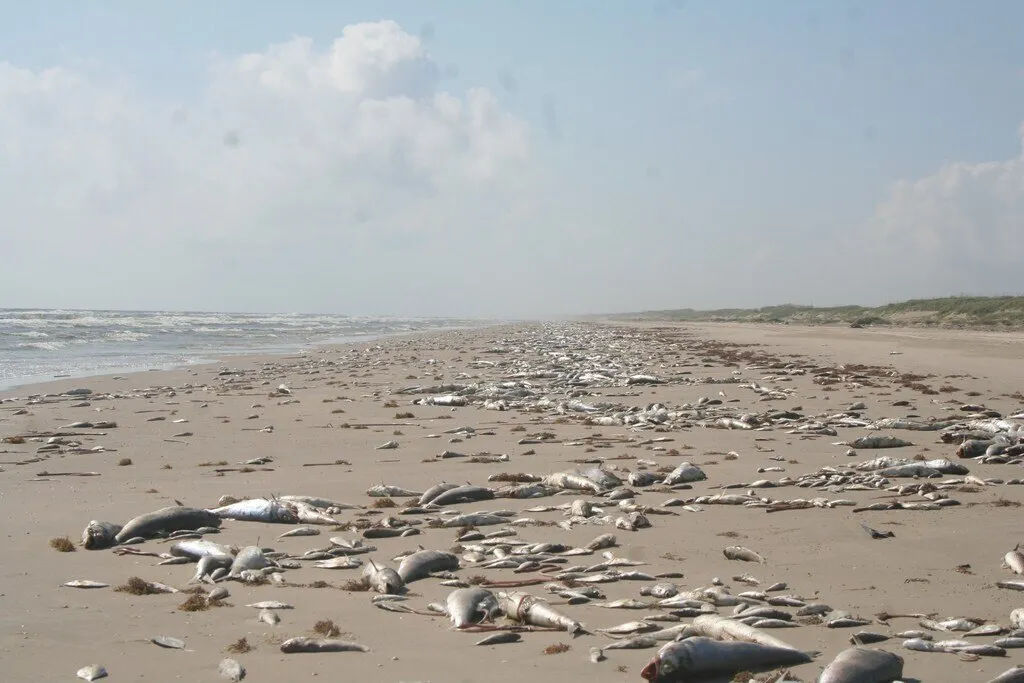
Understand that a harmful algal bloom can also kill fish with toxins, not just anoxia. This image doesn’t specify which killed the fish.
Competing Hypotheses
As previously hinted at, the reasons for this anoxia are poorly understood. Thus far, scientists have proposed and debated no fewer than six general hypotheses: extraterrestrial impacts, supervolcanoes, global warming, global cooling, continental weathering, and nutrient runoff, and the development of terrestrial rainforests, which would have disrupted the carbon cycle.
What a mouthful! See the table below for a better representation of these proposed extinction triggers.
| Potential Cause | Explanation |
|---|---|
| Extraterrestrial Impact | Asteroid or comet strike causing global environmental changes |
| Supervolcanoes | Massive volcanic eruptions release large amounts of gases and particles into the atmosphere |
| Global Warming | Extreme increase in global temperatures, possibly due to greenhouse gas emissions |
| Global Cooling | Extreme decrease in global temperatures, potentially triggered by atmospheric changes |
| Continental Weathering | Changes in land surface weathering altering ocean chemistry and nutrient cycles |
| Nutrient Runoff | Excess nutrients flowing into oceans, leading to algal blooms and oxygen depletion |
| Terrestrial Rainforests | Development of first rainforests disrupting the global carbon cycle |
To further complicate the situation, the true reason for the Frasnian-Famennian could incorporate any combination of the above scenarios. What’s a scientist to do?
The answer is simple: keep digging. Science is a journey of discovery, not an instant revelation. Today’s lack of a definitive explanation doesn’t mean we’ll never crack the case. It’s worth remembering that even the famous dinosaur extinction was once shrouded in mystery.
Before 1980, the idea of an asteroid impact wiping out the dinosaurs seemed like science fiction. Now, it’s accepted as a scientific fact.
This persistence in the face of uncertainty is what drives scientific progress. Who knows? The next big breakthrough in understanding the Frasnian-Famennian extinction could be just around the corner, waiting for a keen-eyed researcher to connect the dots.
Enduring Impacts of the Late Devonian Extinction
Of the Big Five mass extinctions, the Late Devonian mass extinction proved the least deadly. Even so, roughly 70 to 80% of all species alive before the first extinctions occurred had gone extinct by the end of the Devonian Period.
The placoderms, including the fearsome Dunkleosteus, managed to survive the Frasnian-Famennian, only to be wiped out by the End-Famennian extinction. Most other groups of vertebrates survived into the oncoming Carboniferous Period, which spanned 359 to 299 million years ago.
Interestingly, just as most major taxa of vertebrates survived the late-Devonian mass extinction, so did most invertebrate taxa. Just like before with the End-Ordovician mass extinction, the Late Devonian mass extinction left less of an impact on Earth’s oceans than one might expect: the oceans still contained abundant crinoids and brachiopods as well as trilobites, solitary corals, and other “classic” paleozoic organisms.
Many individual species went extinct, but many genera and even more families of organisms endured. However, all of that was about to change with the arrival of the Great Dying at the end of the Permian Period 252 million years ago.
Unlike the previous two mass extinctions, the Earth would never look the same in the aftermath of its third mass extinction. You guessed it, we’ll get to that in another article.
If you found this topic interesting please share it with someone you know. If you have an idea about which of these hypothesis you find most plausible, let us know in the comments.

